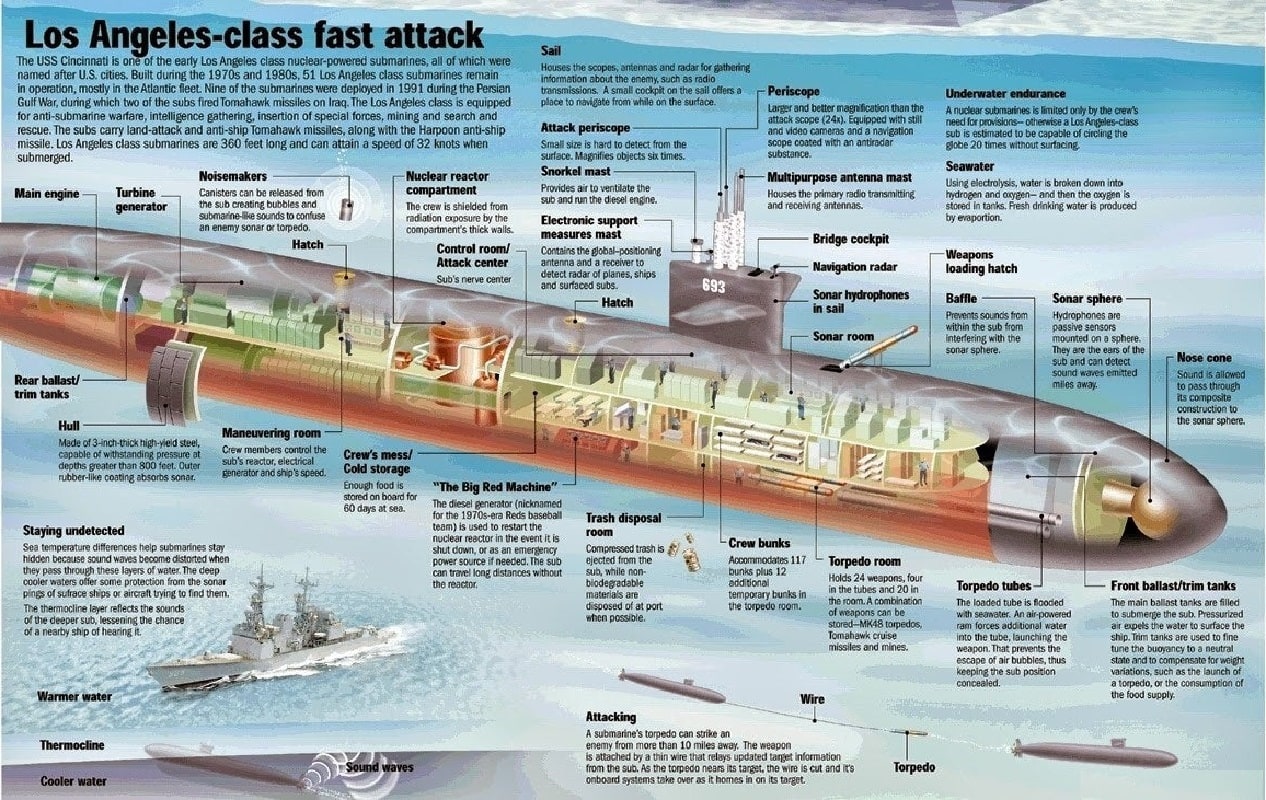On a cold evening on February 11th, 1992, the crews of Russian and American submarines had quite a close shave.
Any accident is ugly, but when it involves two nuclear-powered submarines, which jointly displace over 15,000 tons, coming together beneath the surface, the situation can quickly become terrifying.
The USS Baton Rouge
The American submarine was the USS Baton Rouge, a Los Angeles-class fast attack submarine. Commissioned in June of 1977, she was only the second submarine in her class. Her service was standard for a submarine at the time, deploying to the Mediterranean Ocean several times, circumnavigating the globe, and even earning a handful of Meritorious Unit Citations. This deployment ended very differently.
Baton Rouge was serving as part of “Operation Holy Stone,” known as “Operation Pinnacle” or “Bollard” by submarine crews. This mission was an ongoing operation from the Cold War where the U.S. Navy sent boats to spy on major Soviet submarine bases. Some of the more audacious aspects of the mission even included tapping undersea cables to spy on Soviet communications.
Despite the end of the Cold War, the U.S. was still keenly interested in the nuclear submarines docked in places such as Severomorsk, which now belonged to the Russian Federation. To that end, U.S. submarines continued “Holy Stone” activities virtually unabated, which placed the Baton Rouge in the Barents Sea that February.
B-276 Kostroma
The Russian sub was the B-276 Kostroma, a Sierra-class fast attack submarine. Designed and built slightly later than its Los Angeles-class counterparts, the Sierras were capable boats. The dissolution of the Soviet Union meant only four were ever commissioned so they were valuable assets to the Russian navy.
The Collision
Around 8 p.m. on February 11th, the two boats collided at a point just over 12 miles from the Russian shore. While the U.S. maintained that it took place in international waters, the Russian government claimed it was within their territorial waters due to the use of a straight baseline when measuring their coast.
Based on damage to the submarines, it appears the Russian sub surfaced underneath the American boat, damaging its sail in the process. The Baton Rouge suffered scrapes and a punctured ballast tank. Great fortune meant none of the crew was hurt and neither sub was lost, although the crew of the Baton Rouge must have been sweating due to the single-hulled construction of the vessel – any puncture would have led to flooding that would most likely have been catastrophic.
Controversy bloomed in the aftermath of the collision. The U.S. Navy claimed the Baton Rouge was intercepting wireless communications while Russian sources asserted the two subs were playing a “cat and mouse” game, trying to track each other without being detected themselves. In any case, the Russian government was displeased and loudly voiced its sentiment to the U.S.; the fact that an American sub was operating so close to one of their major bases indicated that the U.S. had continued its aggressive policies from the Cold War and the Russians felt this was an unnecessary provocation. The U.S. Secretary of State James Baker met with Russian President Boris Yeltsin shortly after the incident in an attempt to mend relations.
Within the U.S., the Navy somewhat scaled back “Holy Stone” activities as a result of the collision however it took a similar incident just over a year later to actually reduce the scale and tempo of missions to Russian sub bases.
Maya Carlin, a Senior Editor for 19FortyFive, is an analyst with the Center for Security Policy and a former Anna Sobol Levy Fellow at IDC Herzliya in Israel. She has by-lines in many publications, including The National Interest, Jerusalem Post, and Times of Israel. You can follow her on Twitter: @MayaCarlin.
From the Vault
Total Massacre’: Ukraine Footage Shows Russian Cruise Missile Shipment Attacked

